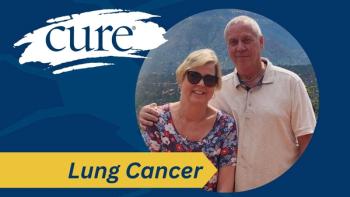
Understanding Clinical Trial Site Supply and Access
Key Takeaways
- Clinical trial sites often open and close rapidly, with 60% ceasing operations within the first year, impacting patient access.
- The high closure rate of trial sites reflects unique research objectives rather than failure, emphasizing the need for nuanced understanding.
An expert discusses why up to 60% of new trial sites close in year one and what this means for patient access and research supply.
Although clinical trials rely on physical locations (sites) where participants travel to receive treatment, relatively little is known about the overall life cycle of these sites or how their availability impacts patient access, according to recent research.
This research, which was published by Andrew Friedson and colleagues, cited that many clinical trial sites open and close rapidly, with up to 60% of new sites ceasing operations within their first year. Understanding these patterns can shed light on the broader “supply” of clinical trial infrastructure and inform strategies to improve patient access.
Friedson, director of Health Economics and the head of research for the Milken Institute Health, sat down for an interview with CURE to discuss his team’s research examining U.S.-based sites involved in phase 1 through 4 pharmaceutical clinical trials between 2017 and 2024.
CURE asked Friedson about the motivation behind the study, the high early closure rate of new sites and what factors contribute to a site’s survival. His responses provide a nuanced perspective on the challenges and dynamics of clinical trial infrastructure, emphasizing that site “death” does not necessarily indicate failure, but rather reflects the unique objectives of research operations.
CURE: What motivated you and your team to investigate the life cycle of clinical trials, and why has this area been historically under examined?
Friedson: Yeah, so this is a really great question, and it's a good thing to think about. [As] health economists, we think about things very much in terms of how markets behave. In terms of clinical research, even though we don't think about it traditionally as a market where we're buying and selling things, there still are a lot of market-like features that we want to think about. There's supply of trials, there's demand for trials. These are going to help decide the intensity of research, where things are going to be deployed, and how much energy we as a society are going to put into things. Therefore, if we're going to be thinking about policies that are going to accelerate or decelerate the rate of research, we need to understand these market fundamentals. That's kind of the lens that we're coming at this through.
Could you explain how this economic perspective on clinical trials connects to your focus on patient access and the availability of clinical trial sites?
We've done a bit of work previously on clinical trials ... we're super interested in access to clinical research. The idea is that if you are a patient and you would like to be involved in clinical research, we would like you to be able to have that opportunity. If you're going to be thinking about access, one of the things you need to be thinking about is supply. You can't access something that does not exist. When thinking about supply of clinical trial sites, or supply of clinical trials, you need to also be thinking about the supply of physical locations where you can do this.
The way that economists think about supply of things is ... for example, if we're looking at businesses, the Bureau of Labor Statistics tracks. We know the number of businesses that open in a given year. We know the number of businesses that close in a given year. Openings and closings together give you something called churn. You've got inflows, you've got outflows and the net of those is whether your supply is growing or your supply is decreasing.
However, nobody has been tracking this for clinical trials. It's the type of thing that when we were thinking about access, we were like, "Oh, we'll just check the supply numbers." And then we realized, "Oh, there are no supply numbers." Then we got to the space of, "Well, what would it take to be able to make some?" And that's what this report is, is saying, "OK, we do have public records for clinical trials, so what would it take to take those public records and then back out supply numbers for the locations?" That's kind of how this came to be.
The report highlights that up to 60% of new clinical trial sites close within their first year. How does this high early closure rate impact patient access to trials, and what are the key factors driving these closures?
This is a number that feels staggering, but it's actually not a crazy number at all. The number of businesses that close within the first year is lower, but it's pretty high. It is [approximately] 30% or 40% of businesses. This is something that economists have known for a long time: a lot of businesses open and then fail within the first year. Starting something from the ground up is not easy, and sometimes it just doesn't work.
Now, I want to be very clear that clinical trial sites do not have the same objective as a business. The point of a business is to open to make a profit, and to stay open and continue making a profit. Many clinical trial sites are designed to not stay open. If I have a population and I have a new drug for that population, but I don't have other drugs in that pipeline, the strategy could be: open a site, run a trial, close the site and that could be a success. So, our objectives are very different.
The idea that we're seeing more closures within the first year, one story that fits the facts is that clinical trial sites fail more frequently than businesses. The other possibility is that clinical trial sites succeed more than businesses, but success for a clinical trial site could be: open, do the research you need to do and then close.
So, I want to stay away from this story of we are failing more often, and I want it to be more of a story of when we talk about birth and death. Birth is you have a first trial, death is you no longer have future, but that doesn't mean that you haven't served your purpose from a clinical research perspective.
Transcript has been edited for clarity and conciseness.
Reference
- “The Supply of Clinical Trial Sites: Openings, Closings, and Longevity,” by Andrew Friedson and Bumyang Kim. The Milken Institute; Sept. 30, 2025.
For more news on cancer updates, research and education, don’t forget to





